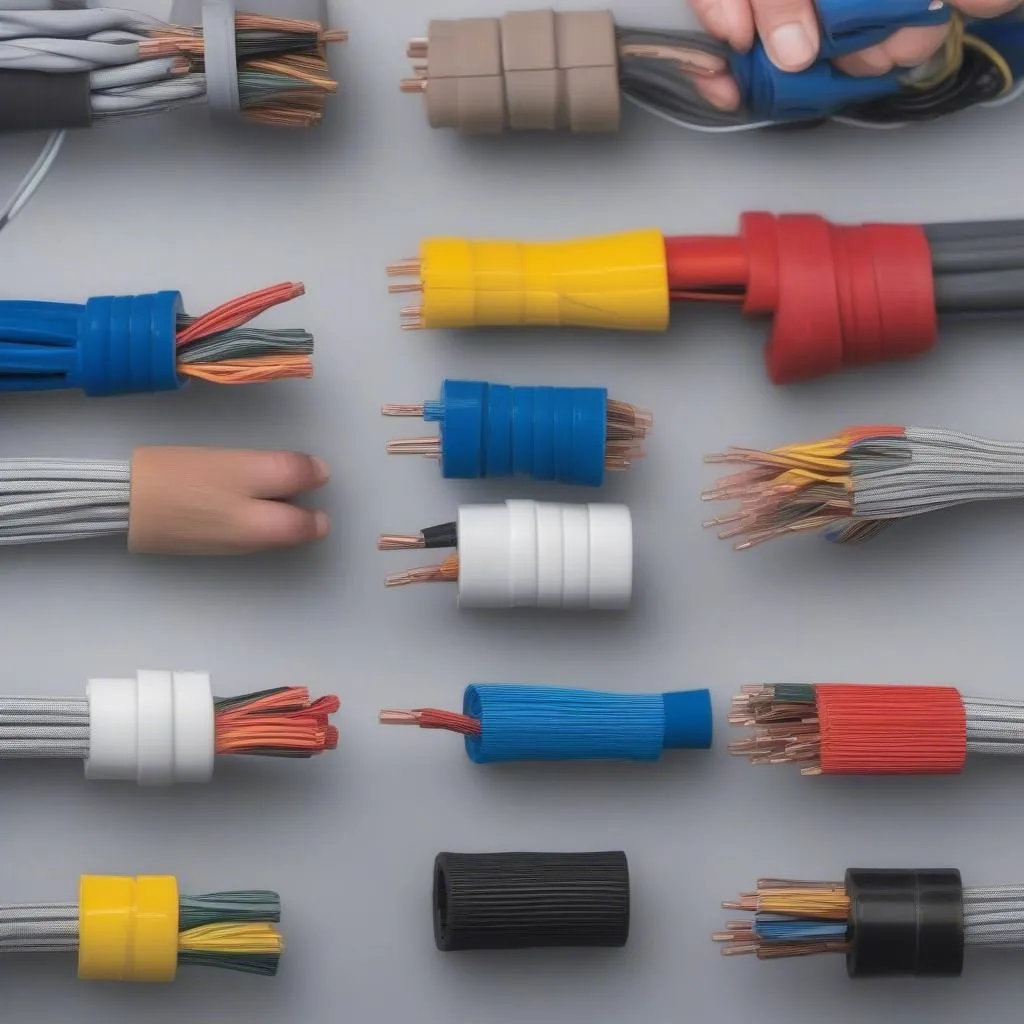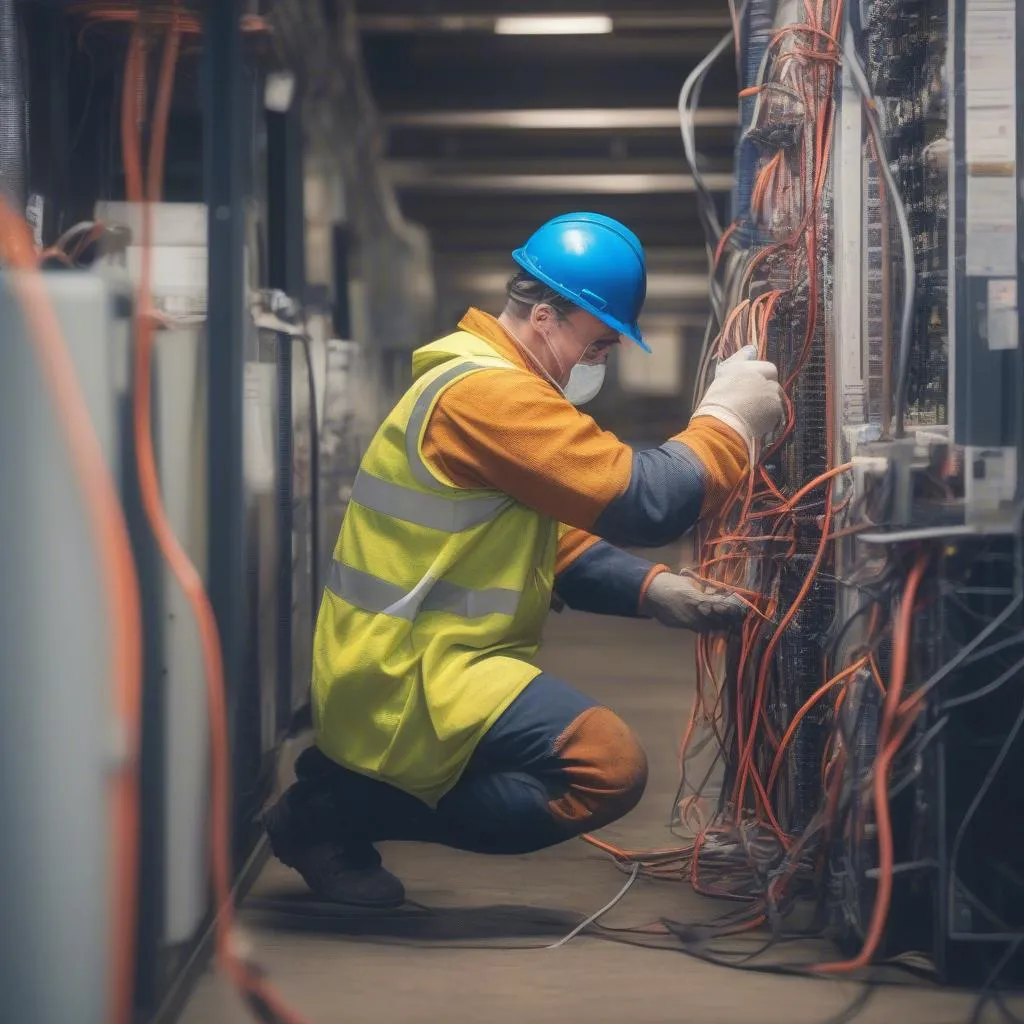You’re knee-deep in a project, and you need to get your hands on a 3-phase power cable. Sounds simple enough, right? But as you delve deeper, you realize it’s a jungle out there. Don’t worry, we’ve got your back. This guide will walk you through the essentials of choosing the perfect 3-phase power cable for your specific needs.
Understanding the Basics: Why 3-Phase Power?
Before we jump into the nitty-gritty of cables, let’s quickly recap why 3-phase power is the go-to choice for many applications. Imagine trying to fill a swimming pool using a single garden hose. It would take ages, wouldn’t it? Now, picture using three hoses simultaneously. That’s the beauty of 3-phase power – it delivers a smoother, more efficient flow of electricity compared to single-phase power. This makes it a workhorse for industrial settings, large businesses, and even some residential applications.
Decoding the Cable Anatomy
A 3-phase power cable isn’t just a single wire; it’s a sophisticated system designed to handle the demands of high-power applications. Here’s a breakdown of the key components:
- Conductors: These are the veins carrying the electrical current. Typically, you’ll find three insulated conductors for the three phases, along with a ground wire for safety.
- Insulation: Think of this as the protective shield around the conductors, preventing current leakage and ensuring safety.
- Shielding: In environments with electromagnetic interference (EMI), a shielding layer acts as a barrier, maintaining signal integrity.
- Jacket: The outer layer, often made of durable materials like PVC or nylon, provides protection against abrasion, moisture, and other environmental factors.
Factors to Consider When Choosing Your Cable
Now, let’s dive into the heart of the matter – the factors that should guide your decision-making process:
1. Ampacity: Matching Power Demands
Ampacity refers to the maximum current a cable can safely carry. It’s crucial to choose a cable with an ampacity rating that meets or exceeds your application’s power requirements. Underestimating ampacity can lead to overheating and potential hazards.
2. Voltage: Staying Within Safe Limits
Just like ampacity, voltage is critical for safety and performance. Ensure the cable’s voltage rating aligns with your system’s voltage to prevent damage and ensure reliable operation.
3. Conductor Material: Weighing the Pros and Cons
The most common conductor materials are copper and aluminum. Copper boasts higher conductivity and better corrosion resistance but comes at a higher price. Aluminum, on the other hand, is more budget-friendly but has lower conductivity.
4. Insulation Type: Tailoring to Your Environment
Different environments call for different insulation types. For instance, in high-temperature settings, materials like silicone rubber or mineral insulated cables are ideal.
5. Shielding Requirements: Combating Interference
In environments prone to electromagnetic interference, such as industrial settings with heavy machinery, opt for shielded cables to maintain signal quality and prevent disruptions.
6. Flexibility and Durability: Finding the Right Balance
Consider the installation environment and the cable’s intended use. Will it be subjected to bending or twisting? Choosing a cable with appropriate flexibility and a durable jacket material will ensure longevity.
 Choosing the Right Cable
Choosing the Right Cable
Making Informed Decisions: Don’t Be Afraid to Ask
Choosing the right 3-phase power cable is crucial for the safety, reliability, and efficiency of your electrical system. By understanding the key factors involved and seeking expert advice when needed, you can make an informed decision that meets your specific requirements. Remember, a well-chosen cable is an investment in the long-term success of your project.
FAQs about 3-Phase Power Cables
Q: Can I use a single-phase cable for a 3-phase application?
A: No, using a single-phase cable for a 3-phase application can lead to serious problems, including overheating and potential fire hazards.
Q: How do I determine the correct cable size for my application?
A: Consulting with a qualified electrician is highly recommended to determine the appropriate cable size based on your specific load requirements, distance, and other factors.
Q: What safety precautions should I take when working with 3-phase power cables?
A: Always de-energize the circuit before working on any electrical wiring. Wear appropriate personal protective equipment (PPE) and follow all relevant safety guidelines.
 Electrician Working on Cables
Electrician Working on Cables
Choosing the right 3-phase power cable is just one piece of the puzzle. From Hanoi’s charming Old Quarter to the breathtaking landscapes of Ha Long Bay, TRAVELCAR offers a seamless travel experience with reliable airport transfers, comfortable car rentals, and expertly curated tours. Let us take care of the logistics while you focus on creating unforgettable memories.
Start planning your Hanoi adventure with TRAVELCAR today!

 Electrician Working on Cables
Electrician Working on Cables